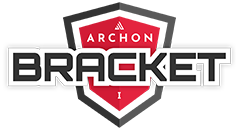Friday 31.01.20
AAAARRRRRGGGGHHHH

Tomorrow brings Event 2
Anyone guess what it’s going to be?
Remember, if it’s something you’re good at, then great.
But if it’s something you’re not very good at, then even better.
The Bracket was never designed to just let you do all the things you’re good at, it’s designed for you to find out about yourself, and sometimes do things that nudge you out of your comfort zone.
Keep your eyes on Instagram as I’ll be revealing it in the afternoon, live at the Gymshark Lifting Club.
Fordy
YOU + VIDEO = EXCITED
We want you to be as excited as these fans are when we tell you whats next on the Bracket
Wednesday 29.01.20
YOU CAN DO IT, YOU JUST MIGHT BE TELLING YOURSELF YOU CAN’T
The Bracket is going to push you mentally as much as physically. There will be things that you are not good at or times when you are asked to try to do your very best in order to progress through to the next round of the Lockdown. It’s how you view these scenarios that will often dictate how you perform. If you have a negative storyline to your life then this will impact the things that you do everyday, or the way in which you see yourself.
We are all a product of our own narrative, or the narrative that has been placed upon us by our friends, peers or parents. Your narrative that you tell yourself is very powerful, I’ve always told myself that I don’t really like my smile and so every picture that is taken of me I feel like I shouldn’t smile as I won’t like the picture because of it. This is the narrative now every time that there is someone with a camera knocking around. I also told myself for years that I am not very good at squatting and so in all honesty, its the one thing I try to avoid doing as much as possible. These are negative narratives that I have told myself, I have told myself a story that I now believe is true (or at least aspects of it are) and so I regularly play out that storyline in my life whenever the situation arises.
So we know it’s coming. We know that part of the Bracket is going to test you, so I want to show you how easily that negative storytelling can take hold of you in less than five minutes so that when it does happen, hopefully you can recognise it and do something about it.
Ready?
Give yourself a strict 5 seconds to try and unscramble each of the words below in sequence. If you can’t do one in the 5 seconds, then move on to the next and at the end make a note of how many you got right.
WHIRL
(5, 4, 3, 2, 1)
SLAPSTICK
(5,4,3,2,1)
CINERAMA
(5,4,3,2,1)
Be honest. How many did you get right?
Probably none, and that’s ok. Before you try to understand why give the next lot a go instead.
Ready?
Go
TAB
(5,4,3,2,1)
LEMON
(5,4,3,2,1)
CINERAMA
(5,4,3,2,1)
How many this time? Hopefully you said 3
Now if you did get 3, there’s a reason.
Firstly you will have noticed that the 3rd word was the same in each example, but the second time around you found it easier to unscramble (hopefully). That’s because the first 2 words, WHIRL and SLAPSTICK are impossible to unscramble and make another word out of and so by the time you had reached the third word you had already delivered a negative storyline to yourself that you weren’t very good at this and therefore the third word was impossible as well.
The second time around though the first word TAB, could easily be unscrambled to make BAT, and LEMON into MELON. This gave you a positive storyline to work with when it came to the third word and hopefully this time you saw it straight away that CINERAMA could in fact became AMERICAN.
This is a perfect example of a negative storyline and something called learned helplessness which we will discuss in more detail in the coming feeds.
But for now, the lesson for today is that we create the storyline, not the circumstances and so whatever the Bracket throws at you in the coming weeks and months, remember that you can create your own story to go with it, not the other way around.
Fordy
LEARNED HELPLESSNESS
The video above is your intro to learned helplessness, take a minute to watch it as it will come in super handy over the next week or so when we delve into it a little more.
Everything will relate back to the Bracket and your performance at the same time as trying to get you to view your life and performance in a more positive manner.
Tell yourself a good story today, in fact, tell one everyday if you can.
Tuesday 28.01.20
DON”T LOOK UP
DON”T LOOK DOWN
LOOK WITHIN
When you look at the Bracket, don’t look at the people above you. Don’t look at the people below you. Start by looking at yourself.
Everyone, everyday makes the decision when they get up in the morning to either be positive, or negative. That doesn’t mean that you will be positive all day, or indeed negative, as things will come up that will change your outlook. But with regard to the Bracket and the event, you will ultimately choose how good you become at it. We can give you all the tools, we already have. You have a program to follow from British Rowing. You have 28 days now of daily feeds to look at, digest on the way to work and develop your skills. The only person that can put in the work for you though, is you.
They say the hard work is done in the shadows, in the dark, in the places that no one else can see and at times that no one else will be willing to put in the work. But the work will start in the mind. You need to go to the gym, you need to get onto to the rower, you need to give it everything you have.
It’s at this point that you can look at your position in the Bracket and not worry about if it’s good or bad, fast or slow. What it represents is you. It represents the work you have put in to the get there. Do you want it to be better? then work harder.
The Bracket is about you first, be the very best version of yourself that you can be. If you can only train 3 times a week for an hour at a time then stop looking at the people above you who’s job it is to train everyday, 8 hours a day.
Fordy
BILL PARCELS
New York Giants Coach famously said,
“You are what your record says you are“
don’t like it?
Do something about it.
Monday 27.01.20
NO WORDS

RIP
A TRUE GREAT

It’s not often you get to witness greatness. I’m 44 years old and have played basketball since I was 12. I have grown up watching Jordan, then Kobe, and now Lebron. Seeing what happened yesterday broke my heart and it was made all the worse as I learned that his beautiful 13 year old daughter was taken with him. I have 2 boys and I look at them everyday like Kobe is looking at Gianna in this photo. Mamba will always be one of the best players to ever grace the hardwood and I’m just thankful that I got to see him play so many times and inspire those around him.
I can’t say they are in a better place because they should still both be here.
My thoughts and prayers go out to his family who must be broken.
The world has truly lost two magical souls yesterday.
Rest in peace Kobe and Gianna, the world mourns you today and forever.
Sunday 26.01.20
MONDAY 3RD OF FEBRUARY
This is going to be the start of our very first ever input week. So between Monday 3rd and Sunday the 9th February we want you to input your 500m Rowing attempt. As you know you will have right up until the Lockdown in October to put in your final attempt but we want to start to create a community/collective feel to the whole process so that everyone feels supported in their efforts and if anyone has any problems or issues they will have people to help them out.
If you can please video your attempts and get them over to us, and also share and tag your attempts on all social media channels.
Sharing is caring after all.
Any questions as usual let us know at [email protected]
READ A BOOK
It’s not often I get the time to sit down and read, but here is a recommendation for you all on the Bracket as I think a lot of what it talks about is what we are trying to in-still into our collective.
The Power of Negative Thinking: An Unconventional Approach to Achieving Positive Results
Here is the synopsis
Norman Vincent Peale’s The Power of Positive Thinking, a classic bestseller, has inspired an optimistic perspective for millions of Americans. Now, in an inspirational and entertaining rebuttal, the legendary basketball coach Bob Knight explains why “negative thinking” will actually produce more positive results, in sports and in daily life. Coach Knight, the second-winningest coach in NCAA history with 902 victories, explains that victory is often attained by the team that makes the fewest mistakes. His coaching philosophy was to instill discipline by “preparing to win” rather than hoping to win. That meant understanding the downside and drilling his teams to prevent the things that could go wrong. And when his teams did win, he made sure they didn’t dwell on their success, but rather looked immediately to the challenges of the next game. He applies this lesson to business strategy as well.
Coach Knight has long been inspired by his grandmother’s words, “If wishes were horses, beggars would ride.” As the first person to teach Knight about the power of negative thinking, this book is dedicated to her pragmatic spirit.
I loved it and it changed how I look at coaching myself in all aspects of my fitness. Coach the bad out so that I can only do it right. I kind of like that as I think it’s so different to how people tend to look at their performance.
Give it a try, what’t the worst that can happen? You PB for the rest of the year? lol
Saturday 25.01.20
THE BRACKET EXPLAINED
At the end of this you will understand exactly how the Bracket works, one thing you need to understand is that a Bracket is set up for the higher ranked people or teams to progress through the rounds, BUT there are always upsets. The video opposite shows perhaps one of the biggest ever Bracket upsets as number 16 ranked UMBC pulls off a huge victory against number 1 ranked Virginia. Hard work and consistency will get you through the Bracket, and remember that your place and position at the end, is just your starting point for 2021.
Here is the ultimate, easy breakdown as to how the whole thing is going to work from start to finish.
The Events
The main Bracket events will be released every month, these will be your focus for that month. So as you already know, January is the 500m Row. What this means is that January you will be able to focus on all things rowing as well as doing some of your normal training.
Input Week
We will be posting input weeks, this is your week to input your scores for the previous months event. This, we hope will mean that everyone in the Bracket will come together to all input your attempts.
READ THIS
What is doesn’t mean is that this is the end of your attempt at that particular event. You will have right up until the lockdown in October to put in your final attempt score so you have ages to get better and achieve your personal best. A lot of you thought that once you input your final score on input week thats the one you are stuck with, so this should be great news. The events that you do throughout the rest of the Bracket will help with the ones at the start, so your Row should be better by October purely by default.
The Leaderboard
The main leaderboard on both the platform (in your Archon account) and on the website archon-app/bracket is updated every Monday, and will show the latest top 64.
Tiers
Once the number of participants grow, you will be separated into Tiers and you will essentially compete during the lockdown against your peers in the same tier as you. So everyone in Tier 4 will compete, as will everyone in Tier 3. This will mean that you can become the best within your Tier and your goal will be to jump up into the next Tier next year during the Bracket. This is the fairest way to have a fully inclusive competitive element and will mean that the person you are competing against in the final Bracket rounds will have a score very close to your own.
Anymore questions please let us know and we can answer them on future daily feeds.
Send the to [email protected]
NEW FLOORS & CEILINGS
Due to the nature of the platform and how it works behind the scenes the minimum and maximum points in each tier are forever moving as more and more people register scores. Over 5100 people are now on the platform and updating everyday and so we are looking at adjusting some of the minimum and maximum thresholds. At the moment, this will only really affect the people within the lower tiers (4-6) and will mean that more people will register a score at a lower value. This will mean that we can account for beginners at the start of their fitness journey. It is unlikely to affect those within the top tiers, but just in case the next time you put in your time, distance or weight your score changes slightly it will be due to this. This is not a big deal and only makes the system more accurate as time goes on and gives you a more realistic view of just where you are in relation to the parameters.
We’re really proud that we can do this as it really means that we are always pushing the boundary of our technology and your fitness. No one else has the ability to do this and so we want to make sure than when we lead from the front, we stay there.
Friday 24.01.20
BACK TO BASICS
At last, after spending God knows how many hours of your life pounding away on the treadmill or sitting on a stationary bike, you’ve had enough. No longer shall your workouts involve around some version of a glorified human hamster wheel equipped with a tiny television that is, for some reason, only capable of tuning in to the local PBS affiliate. You, my friend, have decided to be a rowing machine bro, not unlike Armie Hammer in that one movie where the rowing machine bros were so badass that he decided to play two of them at once. Your feet are strapped in, your earbuds are positioned perfectly, and your carefully curated Head of the Charles playlist is ready to go.
Now what?
One of the underrated advantages of treadmills and bikes is that they attempt to replicate something with which most people are already familiar—walking, running, or biking. The barriers to entry are low, and the task of planning and completing a workout is a little more intuitive, since most people know what those activities feel like. Those heuristics are out the door with a rowing machine, though. Do you just… pull? How far? How hard? And why does it insist on measuring distance in meters? We asked Caley Crawford, the Director of Education at Row House, for tips on getting started so that, hopefully, your experience doesn’t end with you throwing your hands up in frustration and crawling back to the elliptical room.
Most people assume that a speedier row is a more intense one, says Crawford. It’s not. The power that each stroke generates is far more important to the workout’s intensity. When your energy is dedicated to rowing as fast as possible, you end up exhausting yourself quickly without getting any meaningful work done. To get a sense of the power you’re generating, focus on lowering your splits over a certain period of time, and/or on increasing your wattage. Most rowing machines track these metrics automatically.
This isn’t like running, where the treadmill spins at a certain speed and you have to match it. The rowing machine gives back only what you put in, so if the workout seems easy, you’re not working hard enough yet. One helpful point to remember is that each stroke should be about 60 percent legs, 30 percent back, and only 10 percent arms, and that the ideal ratio of time for drive (the pull) versus recovery (the release) is 1:2. Think about using your legs to push in an explosive manner with each stroke, almost like you’re doing a squat or a deadlift.
It’s cool that you can reach really far forward and pull really far backward, but focusing on getting the longest possibles strokes risks “over-compression,” explains Crawford, a condition that causes knee pain by transferring the load to the quads. Hamstrings and glutes are the big muscles here, and you want them doing the big work. Be sure to keep your core braced, and when you lean forward, stay closer to 1 o’clock than 3 o’clock.
Rowing machines are equipped with a device called the damper, which is often pushed all the way up to 10 in gyms. Higher damper levels don’t affect resistance, though—they just increase the drag. (Crawford likens it to stacking bricks in your boat). Try moving it down to somewhere between 3 and 5, she says, and focusing on maintaining that explosiveness, which is the key to propelling you farther in a given period of time.
Don’t let chronic lower back pain deter you from giving the rowing machine a try. Done properly, this is a great exercise for strengthening your back, and as a bonus, it rarely leads to the type of chronic knee, ankle, and foot injuries that can plague runners. If you have a temperamental back, be sure to keep your core braced, and that you’re not laying too far back at the conclusion of each stroke. (Here, closer to 11 o’clock than 9 o’clock.)
If you’re used to spending a half-hour on the treadmill, Crawford offers this simple regiment that will keep your schedule intact.
Spend a few minutes getting loose, focusing on that 3-count stroke and 1:2 ratio. Recovery is the part of the stroke that is most often done incorrectly, so be sure you’re taking adequate time.
Complete 8-10 sets of “Power Tens”—ten powerful strokes at about 90 percent effort, with 20 seconds of light rowing in between.
Start with one minute at 24 strokes per minute, and then additional one-minute intervals at 26, 28, and 30 strokes per minute. Work your way back down after that. Try to maintain your wattage or split time throughout, which will be most challenging on the back end of the pyramid.
Get your heart rate up. Do four rounds of 40 seconds of max-effort rowing and 20 seconds of light rowing, and then eight rounds of 20 max-effort seconds and 10 active recovery seconds.
Reset your monitor and row as many meters as you can in two minutes. Take a 90-second rest, and then cover your monitor and do it again, this time trying to beat your first number.
You should always stretch after a workout, but this is especially true when trying something new. Target the hamstrings, glutes, abdominals, and lats in particular. See you in 23.5 hours.
Courtesy of GQ Magazine, Jay Willis
NEW ASSESSMENTS
We have been working away quietly in the shadows to create some new assessments and it wont be long before we can release them. We want your suggestions as to possible assessments/events you would like to see. Anything that is based on Reps, Time, Weight, Power to Weight, Distance etc can be done. Try not to ask for something that has very random variables though, as thats kind of difficult to do.
Send your suggestions to
Thursday 23.01.20
IF YOU ROW, YOU KNOW
With the January Row Challenge we’ve had loads of messages about how often you guys think you should be rowing. Some of you are under the impression that you need to be rowing everyday, 000’s of metres in order to get your best row times. The issue with that is that you’re soon going to get bored, unless you are genuinely in love with Rowing.
Most people who row multiple times a week or more will feel that they are always on the rower. Conversely, if you only Row minimal times a week, let’s say once, then this isn’t enough for your body to get into a groove of the movement pattern in order to create a good enough stroke pattern to improve. So where is the sweet spot? Watch the video opposite to find out, I think you will be surprised by the result.
LONG TERM CONSISTENCY TRUMPS SHORT TERM INTENSITY
Why your challenge needs to be over 12 months rather than 12 weeks. There is ZERO point crushing a 6 or 12 week challenge and then bombing for the next 6 months. We all like to make grand gestures when it comes to change, I’ve gone vegan, vegetarian, paleo, I’m going to the gym everyday blah blah blah. Old habits will creep back in due to the nature of these dramatic changes being unsustainable. I always wonder why, when looking for a gym membership people often ask is there is a 3 month membership. This begs the question, what are you going to do in month 4? We are gradually starting to realise that when it comes to our diet we need to look at calorie deficit and long term changes with a view to not restricting yourself throughout the process, and so we need to look at the gym and working out in the same way. This is why the Bracket is so good. We’re engaging with you for a longer period of time but with a continual change of focus so that you don’t get bored and the change to your current fitness regime isn’t to drastic that it becomes unsustainable.
I love the phrase “It doesn’t matter if you get to the gym today, it really doesn’t even matter if you get there tomorrow. What matters is that you’re still in the gym 20 years from now” Molly Galbraith
I’ll tell you know what I will be in the gym in 20 years, will you?
Wednesday 22.01.20
6,556,241 WTAF
Unfortunately I account for one of the above.
This is how many views the video opposite has gotten on You Tube. Now I know by posting this on the Daily Feed I am contributing to more people actually watching it but I wanted to highlight just what we are trying to achieve here at Archon, and this video, inadvertently does it for me without me even trying. So if you haven’t watched it, go and watch it before continuing.
So whats wrong with it? I think it would be easier to ask whats right with it? Before I start I have nothing against the people in the video, they all seem cool and funny, I have a problem with the underlying theme of the video and the execution, and for it to be viewed over 6.5 million times tells me that it will have ‘influenced’ a certain number of those who viewed it. I’m not here to preach, to say I am right and someone else is wrong, I just want people to be better informed.
The aim of the video is to see who is the ‘strongest‘ and by that I assume they mean who can lift the most. Not once do they account for the fact that they are all different weights. Or heights, or genders, or age. They are just measuring how much weight they can lift from the floor. And there it is ladies and gentlemen, the first glaring issue. At one point on the deadlift the girl states ‘thats heavier than me‘ and then one of the guys says when his friend lifts a weight that he has failed on, ‘but you’re like 20kg heavier than me‘. They are using different techniques, different stances, in fact some are even doing a different movement (sumo) altogether compared to the others. In no way does this show anything, it’s purely reinforcing the stereotype found in every gym, all over the world that to see how strong you are you need to be able to lift more weight than someone else. What makes this worse in my book is that these guys and girl are Gamers, not even qualified. So we have a group of Gamers, showing all this on a video that gets that many views and in my opinion it should never be allowed to be put online in the first place.
Every test after the Deadlift (Bridge, Chin Up, Tyre Flip, with one guy actually complaining about his back pain during the test, ) follows the same format, different techniques, poor form, inconsistent advice etc.
Ultimately this video has done nothing to help anyone except the 5 people who got 6.5 million views for it and are probably getting paid. I understand that You Tube can’t filter videos like this but it’s indicative of the system we find ourselves in today. This video should never have seen the light of day, let alone been viewed by so many people who, a percentage of will actually go to a gym and think it’s a good idea to replicate these challenges.
Archon’s mission was to try to create an environment that meant that you could find out how strong you are, how fast you are and test all the other components of your fitness properly, taking into account all the factors that become relevant (height, weight, age and gender). We want to give fitness professionals the tool to make sure that they give their clients accurate information and can help them achieve personal bests and those who aren’t qualified a way to be able to assess your own level of fitness. Everything about Archon and the Bracket has been set up to create an equal, level playing field so that you can for once truly get an idea of how good, or bad you actually are.
And lastly, if you’re a Gamer, stick to creating content for YouTube, Instagram, Tik Tok or whatever other platform on games and leave fitness to the professionals, there is enough bad advice out there already from those who are qualified, let along those that aren’t.
Ford out
PS. I hope the 4.3k people who gave it a thumbs down are fit pros watching it thinking, WTAF
YOUR ROWING CONTINUES
February is coming, and with it, comes event 2 in the Bracket. But remember, you have right up until the lockdown in October to put in your best Row times. Just because the focus shifts doesn’t mean it’s time to forget the row. Doing everything else for the next 12 months will make you stronger, your power to weight more effective and efficient, we’ll build your engine and every other part of your mind and body to cope with every aspect of the Bracket. Our aim is to release your inner everyday athlete. And all this means that your row will still get better, even though the focus of your main training will shift.
So don’t forget about the row, your input final input needs to be your PB, not the one you do next week or in June. This is a process, and every part of that process will bring about a new high and maybe even some lows but we’ll work through it all together so that by October, those PB’s in January and February will seem like warm ups.
Tuesday 21.01.20
Rowing those extra Lbs away
A side effect of doing all this rowing to get your best 500m time is that ultimately you are using energy, and thats using calories. But how many calories are you actually going to use when rowing. The following is a great article, BUT be warned, it is a little more complex than some of the stuff we have put on the daily feed in the last few days. But stick with it, soon there won’t be anyone in the gym that will be able to surpass your newly found rowing prowess.
Over to Crossfit South, Georgia
I thought I’d make a quick post about the difference when it comes to meters vs calories on the erg. Spoiler alert: there is none!
We’ve all heard it and probably parroted these thinking they were true:
- You’ve got to set the damper up to a 10 when you’re rowing for calories!
- You need 1 calorie per pull!
- You need to pull harder and rate lower because calories don’t coast in like it does with meters!
Okay, I haven’t heard the last one too much, but some people think everything changes when doing calories because when you stop pulling you don’t get any more calories. Sure, when you stop rowing, the monitor slowly continues to add meters. But the same thing is happening when you stop rowing for calories, you just might not see it. If calories were shown out to 1/10th or other fractions, then you could see that you’re slowly chipping away at each calorie. Imagine the opposite: if you were rowing for meters but the erg monitor only updated every 50m. You’re still moving along, the monitor just doesn’t give you precise updates.
Remember 15.5? Rowing for calories and thrusters? For CrossFit Open WOD 15.5, there was a rule that said “Each time you return to the rower you or your judge must reset the monitor to zero before rowing.”
BUT WHY?!
Because the monitor is still chipping away on the next calorie when you stop! Have you ever noticed that if you keep the monitor going during sets, that your first calorie back on the rower comes a LOT quicker? It’s true!
So how are calories calculated on the erg? Well the monitor is calculating calories per hour, which is related to power output, which the erg measures in watts.
If you want to read about the physics of erging, then click HERE to find out more than you ever wanted to know!
SO HOW ARE CALORIES COUNTED?
As I just mentioned, the erg calculates calories based on power output (watts). So how do we figure this out? First, to figure out watts, we use the following formula provided from Concept 2:
watts = 2.80/pace³
Where pace is time in seconds over distance in meters.
For example: a 2:05/500m split = 125 seconds/500 meters or a 0.25 pace. Watts are then calculated as (2.80/0.25 ^ 3) or (2.80/0.015625), which equals 179.2. Since power calculations involve the cube of our pace, the relationship is not linear in a 1:1 ratio, but rather exponential. As your pace gets faster and faster, it’ll require an even greater power output as seen in the following chart:

So going from a pace of 2:00/500m to a pace of 1:55/500m requires an extra 27.6 watts. But going from a pace of 1:30/500m to a faster 1:25/500m is an extra 89.8 watts! Both examples involved going 5 seconds faster, but require vastly different power increases!
Calories and Watts have a pseudo-linear relationship.

The ‘Calorie’ output on a Concept 2 ergometer is an approximate guide to calories burned rather than mechanical work performed. Mechanical work is defined as the average Power x time:
W = P * t
If Power P is measured in Watts and time t in seconds, then the Work W is obtained in Joules. So, rowing a steady 200W for 30 minutes (1800 seconds), you would generate an amount of mechanical work:
W = 200 x 1800 = 360 000 J = 360 kJ
In physics, a ‘calorie’ is defined as the amount of heat energy required to raise the temperature of 1 gramme of water by 1 degree centigrade, giving 1 calorie = 4.2 Joules. Dieticians, on the other hand, use the term ‘calories’ differently – their ‘calories’ are 1000 times bigger (‘kilo-calories’, kC), so dividing 360 kJ by 4.2 gives the mechanical work done in terms of ‘dietary calories’: 85.6 kC
However, for the above workout you would actually get a displayed value approaching 500 kC, i.e. a factor 5 – 6 times larger. This is because the computer attempts to calculate the number of calories you burn up (effectively chemical energy contained in fats and carbohydrates) in order to generate the mechanical work. It uses the formula
E = ( 4 W + 0.35 t ) / 4.2 [kC]
where E is the displayed number of calories [kC], W is the mechanical work in kJ, calculated according to the first equation (W=P*t), t is the time in seconds. This assumes that the body actually requires 4 units of chemical energy to generate 1 unit of mechanical energy (i.e. 25% efficiency) plus a background consumption of 0.35 kJ/sec (=300 kC/hour).
For the above workout (200W steady state for 30 minutes=1800 seconds), you would get:
E = ( 4.0 x 360 + 0.35 x 1800 ) / 4.2 = 493 [kC]
The Concept 2 monitor calculates calories burned based on an individual that weighs 175lb/79.5kg. So if you want to find out how many calories you burned specifically to YOU, then you can use Concept 2’s calorie calculator.
I DON’T UNDERSTAND, WHAT DOES THIS ALL MEAN?!?!?!
Not a whole lot. Basically, the faster you go, the more calories you burn.
But did you see anything in the equation about the damper setting on the erg? Or your stroke rate? Nope!
What changes on the erg when you press the units button on the monitor? Nothing! The laws of physics are the same, nothing has moved around on the erg. What once said meters now says calories. Everything is still the same…So why change how you row?
Calories on the erg is simply another unit of measurement on the monitor. Watts, meters, calories, it doesn’t matter. You don’t need to turn the flywheel to a higher setting. You don’t need to rate faster or slower.You don’t need to row upside down. You don’t have to pull harder when doing calories vs meters.
Regardless of rowing for calories or meters, you need to row the same way and remain efficient.
Think of it this way: If you’re running 1600m or running 1 mile, are you going to do anything different? No. It’s the exact same thing, just measured differently. Same thing when you’re snatching with pounds vs kilogram plates. Nothing has changed except for the unit of measurement.
The problem we have when it comes to calories is that we aren’t familiar with what the monitor is showing us. We know how fast we can row 500m. We know how far we can get in a minute. But most of us have no idea how many calories we can get in a minute or how long it will take us to do 50 calories!
SO WHAT CAN I DO TO IMPROVE MY CALORIE ROWING?
For starters I took the guess work out figuring out how calories/hour compared to split times with the chart below!
 So let’s say a WOD involves 50 calorie row at the beginning and end of the workout. Looking at my chart, that’s going to end up being longer than 500m unless you can row a sub-1:30 pace for 500m and still have energy left in the tank. For 50 calories it’s going to take around 600-900m in the end, so you definitely DO NOT want to row as fast as your 500m PR pace. Maybe for this workout you’ll aim for your 2K pace. If your 2K time is 8:00, that’s a 2:00/500m pace which equates to ~1000 cal/hr on the monitor. You’ll finish 50 calories in roughly 3 minutes and you’ll have traveled about 750m. Nothing too crazy so you should have plenty of energy left to complete the workout and the final row at the end!
So let’s say a WOD involves 50 calorie row at the beginning and end of the workout. Looking at my chart, that’s going to end up being longer than 500m unless you can row a sub-1:30 pace for 500m and still have energy left in the tank. For 50 calories it’s going to take around 600-900m in the end, so you definitely DO NOT want to row as fast as your 500m PR pace. Maybe for this workout you’ll aim for your 2K pace. If your 2K time is 8:00, that’s a 2:00/500m pace which equates to ~1000 cal/hr on the monitor. You’ll finish 50 calories in roughly 3 minutes and you’ll have traveled about 750m. Nothing too crazy so you should have plenty of energy left to complete the workout and the final row at the end!
Again, don’t change the way you row just because you changed what the monitor says.. Going into any workout on the erg requires that you understand how to use it. There is no good way to game the machine that can outperform good movement patterns and efficiency. Taking the time to learn the skill will improve not just your calorie rowing but any of your rowing workouts.
23 Seconds in you have Mr. All the gear no idea
Yes, he has the all in one on, yes he has a cool Concept 2 Dynamic Rower, he probably has Row Pro software, an Apple Watch or Myzone tracking all his stats, but at the end of the day the basics have to come first. Fundamentals are essentials when it comes to training. Groove the techniques until they become habits. When you have the basics right then you can look at all the other things that will help your performance and get you the great results you’re after. But don’t assume just because you have better equipment than someone else you deserve a better result. Time and repetition are two of the greatest tools in your armoury, use them both wisely.
Fordy
Monday 20.01.20
I

The need for Speed.
It’s Monday, it’s a brand new week and we’ve been at this rower not for nearly 3 weeks. You’ve looked at your set up and you’re good to go. You have all your angles right. You’ve look at your Drive Phase, you understand the common issues that can occur with indoor rowing, and you’re of course fixed them. You’ve worked on your recovery, both the recovery phase on and off the rower but now you’ve suddenly realised that you need speed. We’ve asked you to go as fast as possible over 500m and so at some point you need to go faster. The issue with the rowing machine is that you dictate your speed. You choose how fast you go. There isn’t a button that you can press to go faster, you just need to make a conscious effort to increase your speed and therefore reduce your time for your 500m.
So, if this is the first daily feed you have read then go back and look at the previous ones. Watch the videos and start applying the elements to your training, you will surprise yourself and just how much different your row will be in 6 months time than it is right now.
We will be the Maverick to your Goose, the Iceman to your Slider, your………..you get the idea
Have you even given it everything you have if you don’t look like this?
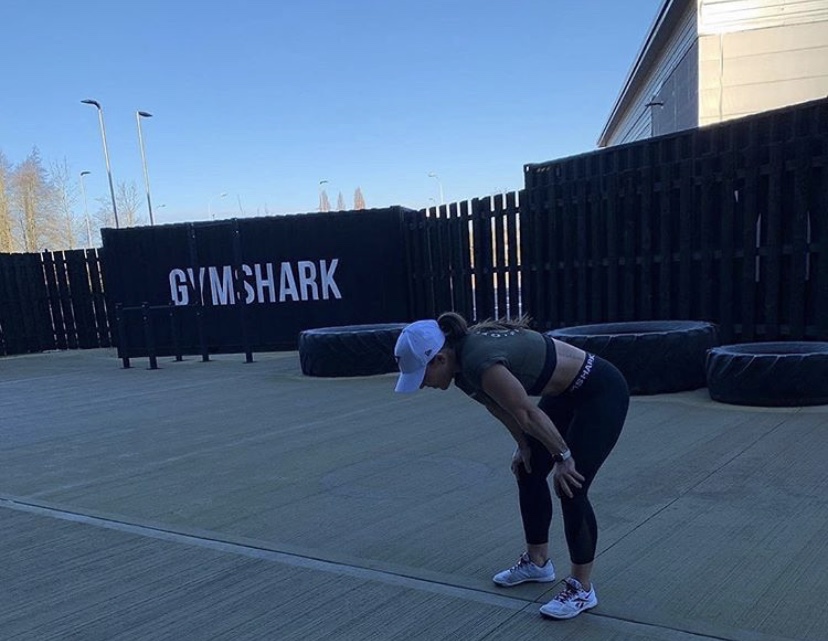
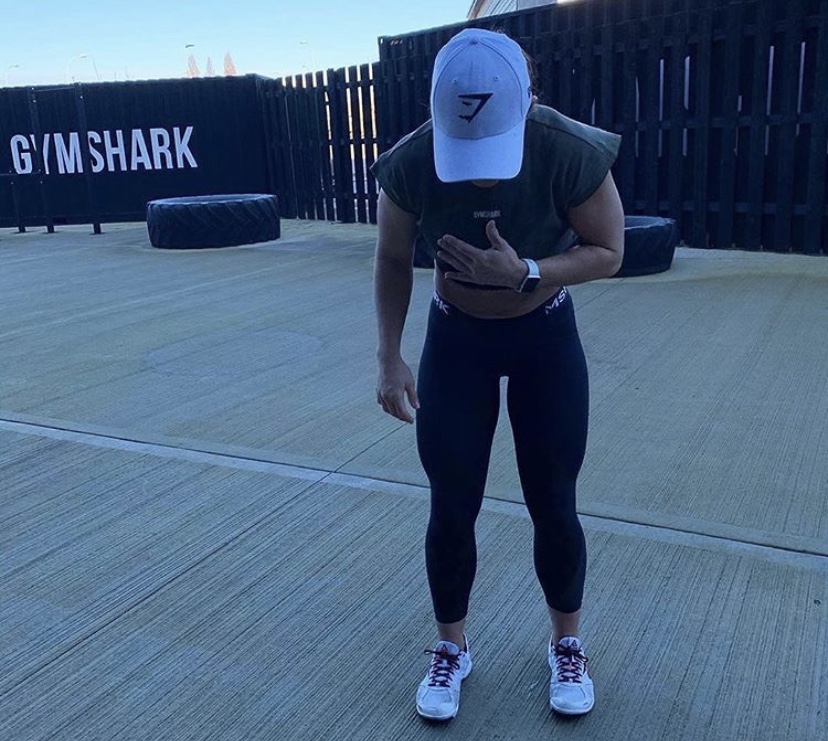

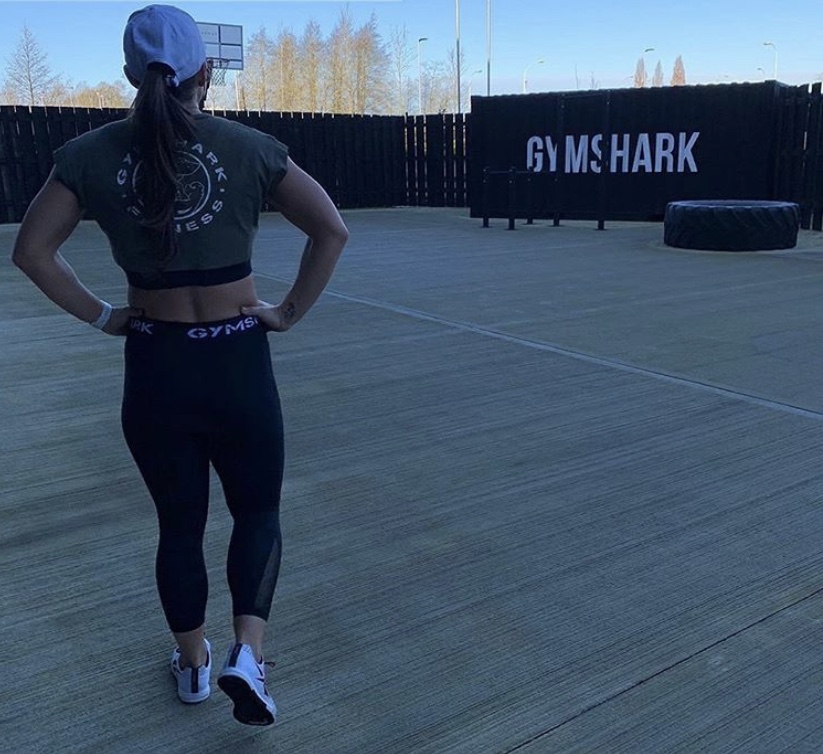
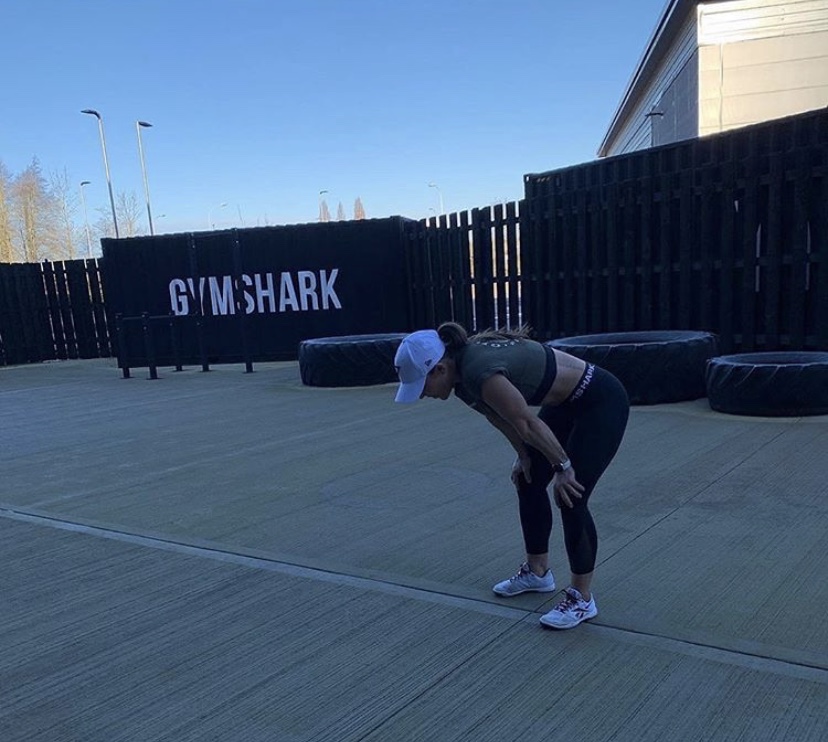

Everyone give Samantha Cubbins a huge virtual high five for obviously giving it everything in her 500m Row attempt and knocking off a whole 3 seconds
Check her out and give her a follow on insta at
coachcubs_adventures
Sunday 19.01.20
Today, we are recovering!
Nope, not the sort of recovery that involves getting enough sleep, getting your nutrition in and taking a day off the gym.
Today we’re talking about the Recovery Phase on the rower, and who better to go through it than Dark Horse. It’s an essential part of the whole rowing stroke, especially when you are pushing for the best 500m time possible.
You need to set some time aside to get good at all the aspects of the row in order to get your best times, it’s going to be this way in every other event in the Bracket as well so get used to looking at all the small things that contribute to one big improvement.
20
Here is your challenge for the day. Try to keep around 20 strokes per minute on your next row. Don’t look at the time, don’t look at anything else except the distance you are going to travel and keeping at 20 strokes per minute. Focus on what goes into every stroke, focus on being explosive on the drive phase and then all the parts that go into the recovery element. Doing this will train your mechanics into understanding the full stroke and getting the most out of every repetition. Once you have mastered this then you can start to look at creating higher levels of power output for each stroke and increasing the stroke rate which will ultimately bring better times and performances. It will require a level of discipline and so will also be good to start training your mind as well for when you need to focus on your mechanics when it starts to get hard during the rowing elements of the Bracket.
Fordy
Saturday 18.01.20
Today in Numbers
366, 2020, 348, 3, 149, 60, 149, 12, 149, 12.4, 12.4,, 2, 380
There are 366 days in 2020
As of today there are 348 left
Say you go to the gym 3 times a week as an average for the rest of the year
That’s 149 sessions
Let’s say you spend 60 minutes actually working out as part of the Bracket
That’s 149 hours
There are 12 events as part of the Bracket
That’s 149 episodes of Game of Thrones, so 12.4 episodes per event
Imagine if you rowed for 12.4 episodes of GOT
How much time is that to work on your technique
How much better would you be
If the average 500m row takes 2 mins you could do 380 attempts
Whhhhaaaaatttttttttttt
How Great Can You Be?
You decide
“You are the sum of all your training”
I’m all for a motivational video every now and again but this video is a little different.
What do I love about it?
I think it depicts the Bracket perfectly.
Throughout the whole Bracket you’re going to end up doing numerous attempts at all of the different events.
You’ll end up training things you never thought you would train before but all anyone will ever see is your score.
The video shows all the practice shots, all the rehearsals but in the end it shows that one shot or that one drive.
You need to understand that going to the gym is exactly the same, what ever reason you have chosen will be the result that everyone else will see.
If you have chosen to enter the Bracket to create long lasting habits in order to lose body fat then what you look like in 12 months will be what everyone will see as ‘your‘ result of being part of the Bracket.
What they won’t see is the hours you’ve put in.
The times when you questioned going to the gym, out on the road in into your own dark place.
So make sure to give them something to see come December.
Make sure you become the sum of all your training.
Fordy
Friday 17.01.20
EFFORT
What’s the difference between a 1minute 38 500m Row and a 1minute 33 500m Row. Technically, it’s 5 seconds, but what gave you that extra 5 seconds? Technique, Breathing, Training both your muscular system and your engine to cope with the additional demand? Maybe. In fact it could be any one of these factors, but, it might have been all down to EFFORT.
Some people mix up effort with motivation, ‘you were more motivated on a certain day to pull a quicker time’ but it might simply come down to the fact that you probably just put in more effort that day. We all like to think that every time we strap into the rower, sit on the bike or lace up our trainers to go running we put in maximal effort, but on occasion we can look back on the session and think, ‘I didn’t really try then as hard as I could have’, or ‘I was tired today so really didn’t have it in me’. Well heres the thing, last night I was sick, I have man flu (cold) and the last thing I wanted to do was train. I observed my own advice from yesterdays daily feed and analysed my illness. Above the neck? Check. Fever? No. Shortness of breath? No. And so I decided the only thing to do was to grow a set and get myself onto the WB. This was the result.
38.7 kph at 226 watt average at 90rpm
This is the 2nd fastest average speed I have done on the WB in the last 3 months. Because I thought I was sick and wasn’t going to have a good session I just relaxed and went for it, and about halfway through I looked at the monitor, realised it was on and so gave it the full beans for the rest of the time, and Bob’s your uncle 38.7kph.
Essentially effort took over on this ride and do you know how I knew? Myzone. I have some really cool friends in fitness and I count Dave Wright (the man behind Myzone) as one of them and last year he kindly gave me a Myzone belt. It’s fair to say I have become pretty addicted, so much so that in 9 months of using it I’m already Silver status and nearly at Gold. But the main thing I love about it is it shows and tracks my effort. Here is my feedback from last night

You can instantly see that for the period I was on the bike, after a short warm up, I was at over 80% effort level, in fact for 28minutes out of the 30 and even touched the red zone for a minute. So now I can look back on my ride and know that not only did I hit a great time but I put in a lot of effort as well. Not everyone is lucky enough to have a Myzone belt, although I would say that they are a great investment or present if someone has a birthday coming up, or if you just want to treat yourself or someone else. You can even get a watch as well to track you throughout your workout, I might actually have to get one of these myself.
It will mean that the next time you do your row (or any other conditioning event in the Bracket) you can look at it with a new, clearer perspective. I did 1 minute 38 seconds but I only put in 68% effort. That means that even though I might have felt like I was putting everything in, I probably wasn’t so there’s some left in the tank for a faster time. Or I pulled the same time but my effort was 85%, so this time effort wasn’t the problem, technique, breathing and more training is needed to get my time down. This sort of information is not only vital to getting the best out of your training sessions but it also gives you something to look back on. The amount of time I have spent looking at these charts and getting excited about my effort level in the last 10 months is actually quite worrying, but at the end of the day I now know that whatever I do, effort will never be the problem, just my old broken, out of condition body might be (probably is).
Find out everything about Myzone here
I don’t advertise anything and aren’t paid to by anyone and so when I recommend something its with a view of how much it can truly help you with your training and for me, Myzone has massively helped.
Fordy
“I don’t have to always hit the last shot, but I do have to walk away knowing that I did everything I could to win the game”
Michael Jordan
For the Bracket you don’t have to get a record every time you do an event. But you do have to walk out of the gym and know that you gave it all you had on that particular day.
Trust in the process.
You will get better.
Everything we do is to help you get better, to help you become consistent and understand yourself better.
That’s what being part of a collective means.
Thursday 16.01.20
The best ability, is availability
Normally this refers to injury, or not getting an injury means that you are good to go in your training or in your sport. But over the last 2 weeks I have been on it with my training, I’ve planned it out pretty well, I’ve been pretty consistent, when I’ve been to the gym I’ve trained hard and then this morning………BOOM. That’s right, I woke up with man flu. Ok so it’s not really flu, but I have a pounding headache, really sore sinuses and a blocked up nose and in general, feel pretty rubbish. So what does that do for my training? Should I train with a cold and push through it? Is that training going to be as effective as it has been for the last 2 weeks? Basically, either way, my ability has just been limited due to the fact I’m ill or my availability has just been decreased. So with this in mind let’s have a look at training during illness and if its a good idea or not.
We’re going to keep this pretty basic to start with and look at if the illness is ABOVE or BELOW the neck.
Above the neck
Basically, you have a cold. Sneezing, sore throat, sinuses, headache, pretty much anything above the neck. This is when you CAN train, but (there is always a but right), it’s all about intensity. Due to you not being 100% then look at cutting your workout slightly shorter than normal and reduce the intensity. Working out at to high of an intensity can actually suppress your immune system and make your recovery longer. Also if you are going to sneeze, sneeze into the crease of your arm or your shoulder. This reduces the risk of spreading the germs with your hands as you will undoubtedly pick up your phone, work on your laptop or just generally spread your germs to all the other gym users. In fact, talking of your hands, wash them, a lot and use antibacterial gels to help from keeping those germs hanging around. Last but by no means least, brush your teeth, a lot of germs and bacteria reside in the mouth and so being vigilant with your oral hygiene will work wonders.
Below the neck
Coughing, vomiting, diarrhea, sickness, shortness of breath, fever, joint pain, aches? This is your cue to ditch your workout. You might feel like you want to train, you might even think you can scale it back and ‘get away with it’ but honestly, it’s not worth the risk of dehydration, further respiratory problems and making the whole thing worse.
Just let it play out, if you’re sick, you’re sick. There really is not much you can do about it other than let yourself recover properly and start back training when you feel up to it.
Don’t worry, all the hard work hasn’t gone to waste, you won’t have lost your gains, the worse that will have happened is that you have probably lost a few workouts thats all so grab a cup of tea and tomorrow we’ll discuss all the ways in which you can help to speed your recovery to get you back in the gym faster.
Go grab your quilt and feel sorry for yourself, even just for an hour, you deserve it.
Fordy
TRUST FORDY
IF YOU HAVEN’T TRAINED TODAY, JUST GO FOR IT.
YOU KNOW 100% YOU WILL FEEL BETTER FOR IT.
Wednesday 15.01.20
That dark place
I sat there thinking I should really do something. I’d had a pretty strange day really, in the morning I had planned on doing loads of work but I had two big calls and that kind of dictated my day and so I ended up not getting half of what I wanted to get done actually done. Add to that I hadn’t trained since Saturday and I was feeling a bit snappy so I decided that I needed to go and do something, blow the cobwebs away and all that.
You often hear people say things like, to get better you need to go to a dark place, learn to be comfortable being uncomfortable, and the old, to achieve what others don’t , you have to do what others wont. Well, I’m not quite sure I fully believe in all of that but today I do think that I did go to my dark place, I was uncomfortable and not everyone will do what I did.
My dark place was the garage at 5.15pm, I was uncomfortable as it was cold, raining and pretty damp, but I clipped on my SPD’s and mounted the Wattbike. I thought I would do a quick 20 minutes but then this happened,

30.01 km later, at an average speed of 38.7kph and an average heart rate of 158bpm I was baked. Now, I’m a bit of stats man (hence the whole Archon ting) and so for me I want to learn as much as I can from a session in order to improve for the next one. My main goal on the Wattbike is to average 40kph for an hour and even though in this session I averaged 38.7 which doesn’t sound that far anyway, I know deep down that it’s a long way off. But there are a few things that I can see from the feedback that are going to help me, and the first is my force angle. It should be between 110 and 120 degrees and mine are showing 109/108 respectively between the left and right leg. So I need to adjust the height of the saddle slightly to maximise the force being put through each stroke. I also need to concentrate more (which is difficult over a long time) on my technique during the whole revolution. Cadence is next, 95 rpm isn’t bad, but I could perhaps increase it slightly. And then theres all the things you can’t see on the display. I wasn’t particularly rested the night before. I hadn’t eaten much the whole of the day, and what I had could only be described as, let’s say not the most nutritious. So was I in an optimal position to get my best result? No. But I could have stayed in the house and not even bothered so I’ll take the win.
For those of you in the Bracket and working on your 500m times start to have a look at the things that surround the events and not just the final time displayed at the end. Look at the stroke rate, look at your set up, breathing, nutrition, rest, recovery and mindset as those may be the factors that are preventing you getting faster, not necessarily your strength or your engine.
You don’t need to be a statistical genius, you don’t need to understand analytics, you just need to look at patterns. Are things generally going in the right direction, that doesn’t mean you have to get faster every time, more recognising that over a period of time things are trending in the right direction.
As always, any questions, comments or anything else just let me know and I’ll do some bits on Insta and maybe, just maybe a cheeky live very soon.
Have an awesome day
Fordy
David Epstein
If you haven’t watched the David Epstein video above, go and do it now. It will be the most interesting 15 minutes of your day. I’ve watched it numerous times and each time I love it more than the last time I watched it. It proves just how amazing us humans really are, but sometimes it’s the things around us that affect our performance the most.
Tuesday 14.01.20
SITTING ON YOUR STUFF
With all of us doing lots of rowing, or at least more than we were before as part of the Bracket we need to be aware of any issues that may come up because of it. The main one being pain in the lower back.
Rowing is a fantastic sport for developing core, leg and arm strength plus all the cardiovascular benefits. Unfortunately, given the nature of the sport, it does have a reasonably high incidence of lower back and overuse injuries.
Fun Fact: Did you know that improperly supported forces approaching 1000N can be loaded through your lumbar spine if imbalances or errors in your technique are present? That’s over 100kg through your spine, every stroke!
The ribs are another area that can come under a lot of stress as a result of rowing and fractures are common to athletes who train and compete often. Unfortunately, it’s not until the athlete is in significant pain that they bring the issue up with their coach – at this point it can be too late and prolonged time off the water is inevitable. Early chest wall pain identification is key!
Rowing injuries can also come in the form of muscle strains or tendon friction injuries.
The rowing stroke is a repeated continuous cycle, from a position with the legs flexed, elbows straight to a fully extended knee position and elbow flexion with the oar handle drawn into the body. A strong back and core strength is a vital component to increase power through the stroke and avoid injury. Poor technique is common, especially in novice rowers, and unless this is rectified, injuries are almost inevitable.
Rowers should always be looking to improve the way they row to reduce their risk of injury. To avoid rowing injuries you should ensure you undertake core and strength training that will provide you with the muscular power to cope with the demands of the sport as well as a flexibility program to ensure you have the necessary range of motion to perform the stroke.
Rowing Injury Risk Factors
Some of the risk factors that can increase your risk of sustaining a rowing injury include:
- Poor technique
- Lack of fitness
- Overtraining
- Musculoskeletal limitations
- Unsupervised resistance training
- Excessive running as part of land training.
Rowing Injury Prevention Suggestions
- Have your biomechanics, muscle lengths and strengths assessed by an experienced physiotherapist to assess your weaknesses to prevent an injury.
- Attain a good level of general health and fitness.
- Warm up thoroughly.
- Stretching is an important part of your cool down routine.
Immediate Injury Management Advice:
- Stop immediately if an injury occurs to help prevent further damage.
- Rowing through the pain will only aggravate the injury.
- Seek prompt treatment of injury.
- Early management will mean less time away from rowing.
- Treat your soft tissue injuries (ligament sprains, muscle strains, bumps and bruises) with rest, ice, compression, elevation until you seek the advice of your health professional.
- Do not resume activity until you have completely recovered from injury and have been advises it is safe by your health professional.
- Watch your technique and address any technique errors.
- If you experience any discomfort in your chest (suspicion of a rib stress fracture), in line with Rowing Australia guidelines, 4 days of no water training is highly recommended.
Being able to perform a pain-free push-up, sit-up, deep-breath, cough and rib spring as well as experiencing no Night Pain or pain with activities of daily living (ADL) is recommended before returning to full rowing training.
Common Rowing Injuries
The most common rowing injury is low back pain – closely followed by the knee! Given rowing is a repetitive sport, it is no surprise that the evidence shows that most injuries are overuse in nature and not so much traumatic (73.8% overuse vs 26.2% traumatic). So any small musculoskeletal limitation placed under the repetitive stress could develop into an injury. As rowing incorporates all the joints of the body to various degrees, an injury can be sustained to any joint. Aside from the back and knee, common rowing injuries include upper back and neck pain, muscle injuries, knee pain, wrist tendinopathies from oar rotations and the obvious hand blisters. Rib stress fractures tend to occur in athletes who are overtraining.
Zoe Russell – Physio Works
CORE
So here is an extract from a great article that discusses how to train your core for Rowing. We’d suggest that you check out the whole article, after all, no one wants to be broken do they?
#1 Full Tension Plank
The plank is a great exercise to train trunk stabilization and ingrain the motor pattern of correctly braced trunk muscles. However, many rowers turn planks into endurance tests of the spine and willpower, hanging in the plank position for minutes at a time and ingraining incorrect bracing patterns. The full tension plank solves this, and I think you’ll find it difficult to maintain for more than 20 seconds on your first time out.
#2 Pallof Press and Lying Pallof Press
The Pallof Press is a great exercise to train rotational trunk stability and can be done with a band or cable machine. Sweep rowing is a rotational sport and successful sweep rowers have great mobility and core stability to allow them to transfer a boatload of power from a position of full reach and compression. However, many sweep rowers only row one side of the boat and overdevelop their stroke-side trunk muscles in doing so.
If you’re a sweep rower, you might really feel the Pallof Press on your non-stroke side abdominal muscles, as well as your glutes to maintain a straight forward body alignment. Preventative care must be taken to avoid injuries in rotational sports by developing the off-side as well as the on-side.
There is also a prone/lying version of the Pallof Press that takes the lower body stability muscles out of it, allowing you to focus solely on abdominal engagement. If you struggle with the standing Pallof Press, try it lying and see if you can get the hang of it at that basic level.
#3 TRX/Gymnastics Ring Planks and Fallouts
Once you have the isometric tension exercises down, you can start introducing some more movement into your core training. It is important to have this down first as a pre-requisite. If you struggle to maintain good tension in the core and trunk muscles with no movement, you will struggle even more with greater variation in position. Begin introducing some variation via instability with TRX or gymnastics ring planks. You can do any plank variation on the TRX or rings to make it more challenging, then introduce more movement with the fallout exercise as you move your hands away from you, then bring them back again, maintaining torso tightness and control the whole time.
#4 Dead Bug Variations
The dead bug exercises are another way that we can train a quality that is very important for rowing–proximal stability for distal mobility. In plain English, this means that a strong and stable core will facilitate athletic movement at the hands and feet better. In the dead bug, really focus on maintaining tight torso position and only introducing as much movement as you can sustain from that position. Contract the abdominal muscles to keep the ribcage pulled down and the lower back flat against the ground, and maintain approximately 10% pressure overhead.
#5 Trunk Training and Compound Exercises
We do a lot of exercises to train the trunk muscles as well as the anterior core muscles. This is important for developing strength and endurance of muscles that need a lot of it to get through something as intense as a 2,000m race. Exercises such as the kettlebell swing, pull-through, glute-ham raise, and Romanian deadlift, are all great exercises to train the muscles of the posterior chain. We typically train the swing and Romanian deadlift for strength and power, with set and rep ranges around 3-5 sets of 4-10 reps, and the pull-through and glute-ham raise with lighter weights for 2-4 sets of 10-20 reps.
Also, since the purpose of the core muscles is to transfer power from your lower body to your upper body, we had better be doing this in training. In addition to direct training, incorporating squats, deadlifts, overhead presses, and barbell/dumbbell rows will train your trunk muscles much more effectively than a routine consisting entirely of isolation exercises and machines.
Putting it all together
We typically do two full-body workouts per week in the weight-room, in addition to 5-6 days on the water and 1-3 additional erg or cross-training sessions. Strength training sessions always begin with a full-body warmup, which emphasizes muscle activation, mobility, and movement patterns, then we move to a large compound exercise for lower body, a large compound exercise for upper body, followed by assistance work, before finishing the session with a circuit of core training and a few isolation exercises for injury prevention. If you are training in this manner, you’re getting a lot of core training through compound exercises and therefore don’t need entire workouts dedicated to core training alone. A fall season (head race/6k time) session from the specific preparation block might look like this:
A. Warmup
B. Front Squat: 3-4 sets up to a 5RM
C. 1/2 Kneeling OHP: 4 x 8
D1. Batwing Row: 3 x 12
D2. DB Bench: 3 x 12
E1. Pallof Press (both sides): 4 x 10
E2. Full Tension Plank: 4 x 15 seconds
E3. Face Pull: 4 x 15
Taken from ‘How to train core for rowing’ by StrengthCoachWill
Monday 13.01.20
For something so simple, it’s actually pretty complicated
Breathing
With all the training you are going to be doing this year it’s going to be more important than ever to maximise your relaxation and sleep. So in order to de-stress and get you to sleep, and continue with the theme of the video we are going to look at the 4-7-8 breathing pattern, how to do it, why you should do it and what the benefits can be.
Taken from Medical News Today, this will teach you everything you need to know
The 4-7-8 breathing technique requires a person to focus on taking a long, deep breath in and out. Rhythmic breathing is a core part of many meditation and yoga practices as it promotes relaxation.
Dr. Andrew Weil teaches the 4-7-8 breathing technique, which he believes can help with the following:
reducing anxiety
helping a person get to sleep
managing cravings
controlling or reducing anger responses
Dr. Weil is a celebrity doctor and the founder and director of the University of Arizona Center for Integrative Medicine.
Before starting the breathing pattern, adopt a comfortable sitting position and place the tip of the tongue on the tissue right behind the top front teeth.
To use the 4-7-8 technique, focus on the following breathing pattern:
empty the lungs of air
breathe in quietly through the nose for 4 seconds
hold the breath for a count of 7 seconds
exhale forcefully through the mouth, pursing the lips and making a “whoosh” sound, for 8 seconds
repeat the cycle up to 4 times
There is an association between certain breathing techniques, such as 4-7-8 breathing, and other relaxation techniques. Some people couple this breathing with the following practices:
guided imagery
progressive muscle relaxation
repetitive prayer
yoga, tai chi, and qigong
mindfulness meditation
The most common uses of 4-7-8 breathing are for reducing stress and anxiety. With frequent use, it reportedly becomes more effective in helping a person manage their stress levels.
This improvement is in contrast to anti-anxiety drugs, which tend to lose some of their effectiveness over time as the body adjusts to them.
People who are interested in trying breathing techniques but unsure of their ability to self-regulate may wish to use an app to help them. People can find apps for various devices in the Apple and Google Play stores.
For example, Breathe is a free app for Apple products, which helps people practice the 4-7-8 breathing method. Overall, the app has good reviews from people who have installed it. It also includes a feature to set reminders to use it regularly during the day.
A free app called Prana Breath: Calm & Meditate is available from the Google Play store. It helps users practice breathing cycles and different methods of breathing for relaxation.
The 4-7-8 breathing pattern and other breathing techniques may offer many potential health benefits, such as helping a person fall asleep faster and lowering their stress levels.
The only reported side effect is lightheadedness. If a person experiences this, they should either stop using the technique or modify the length of their breaths.
Interested mobile users can also try apps to remind them to use the technique throughout the day and help them pace their breathing.
Input week is coming
What’s input week I hear you ask? Well, it’s when we ask everyone as a collective to input their latest attempts for that particular months event. So for January we will be asking you to do the 500m Row. Now, if you’ve already done one, great, do another one. This week isn’t about just you, it’s about the collective of other people that have chosen to join the Bracket journey alongside you. It’s for the ones already struggling with their diet, their motivation or technique. It’s for those who have done a PB and just need someone to say well done or give them a virtual high five. We’ll be sending everyone an email to remind them of input week and we would love you to send in your videos, all of the them, the attempts that go well, and the ones that don’t. If you can’t laugh at yourself then I’m sure we can find someone in the collective who can.
Here’s to a brand new week of training
Fordy
Sunday 12.01.20
BRIC – British Indoor Rowing Championships
We are so lucky to have the backing of British Rowing and so we wanted to show you BRIC, the British Rowing Indoor Championships. We love BRIC, in fact, we love it so much that our very own Matt Ford (Fordy) has committed to entering it in 2020. It would be massive for some of the Archon Collective to be there as well so once the entry goes live we will be posting more details and hoping that Fordy isn’t all on his own in December.
But for now here is everything you need to know about BRIC to get you super excited and to make sure all of that rowing training doesn’t go to waste.
Over 1,800 competitors took to rowing machines at the iconic London 2012 velodrome at Lee Valley VeloPark today for the Mizuno British Rowing Indoor Championships.
Officially the largest indoor rowing event in the world, there were over 2,300 entries across over 140 events, with athletes from as young as 11 right up to age 88 all racing in front of a sold-out crowd.
Benjamin Pritchard smashed the world record for the PR1 Men’s 2k in a time of 7:23.0, wiping a staggering 33 seconds off the previous record set by Russian athlete Alexey Chuvashev. A successful day for the GB Rowing Team was capped off by another world record for Giedre Rakauskaite finishing with 7:03.1 in the PR3 Women’s 2k.
There were several world records across different age categories. Justine Reston brought home a second surprise record of 7:18.3 best in the Masters 50-54 Lightweight Women 2k, beating her own world best of 7:19.0 just two weeks after setting it at the Welsh Indoor Championships in Cardiff.
Speaking afterwards she said: “I’m absolutely made up. Today was about just trying coming to enjoy the race, and I broke my record again! I honestly didn’t expect it.”
“The atmosphere definitely helped. I heard the commentators shouting, ‘Come on let’s get her down to the world record!’, and then the crowd cheering and I thought yes, here we go!”
Adaptive athlete Lauren Rowles led the way shattering the British PR2 Women’s 2k record with a time of 8:18.1, wiping over a minute off the previous best. Her GB teammate Oliver Stanhope also set a new PR3 (PD) age group world record of 6:40.1. Luke Reeson, Sean Gaffney and Kevin Peacock each set PR3 world records in their respective age categories, while Luke Theophilus pulled a British record of 7:25.2 in the (PR3-PD & IV) Men’s 2k.
Several more British records fell in the Masters events. Antoinette Jucker shaved 5 seconds off the British best for the 70-74 Women’s 2k in a time of 8:40.7. Rod Stewart nearly broke the 7 minute mark, setting a record 7:02.8 for the 65-69 Lightweight Men’s 2k. Roger Stainforth took 4.5 seconds off the 75-79 Men’s 2k record, completing the course in 7:25.2. Jilly Tovey also snuck a record in the Open Lightweight Women’s 500m by just 0.2 of a second, setting a new best of 1:40.4.
Breaking records for the juniors, Olivia Harrison pulled a 1:35.1 in the Year 11 Girls’ 500m. Georgia Walker also set a new age group world record of 8:36.6 in the Sixth Form Girls’ PR3 2k, recording the first official time for this event in Britain.
The excitement continued into the evening with the relays as Olympic champion Eric Murray from New Zealand joining the action. Taking part in the Open Mixed 4k with a wild-card team drawn from all the competitors entered, he said: “BRIC is such an iconic event worldwide, it’s great to be able to come here, share a bit of advice, talk to people and just experience what it’s all about.”
“There are so many passionate people just getting out there and giving it a go. The best bit is it’s not all about winning, you can focus on just being better than yourself. If you can come here and set a new personal with a thousand odd people watching you, that’s such a cool experience.”
Fordy’s fate – you decide
OK, so after reading the section above the collective will be the ones to decide Fordy’s fate when it comes to BRIC. We are going to be putting up a poll to determine what event he will do on the day. The options are below just to get you thinking about which way you should cast your vote.
Does he do,
A. 500m only
B. 2000m only
C. 500m and the 2000m
D. The Team relay (with some of you guys) only
E. Lets just do it and go for all three categories, life’s to short
You decide.
Saturday 11.01.20
Bracket Scoring – We’ve made the complex, simple
Too often when forming a comparison within fitness we look at one singular unit and make our decision based upon that with no regard to any other factors that could play a significant role in the outcome. The best example to use is Relative Strength versus Pure Load Lifted. When someone says “what do you bench” in the gym what they essentially asking you is “how much weight do you put on to the bar?” Their response of 120kg then forms the basis of comparison to the number of kg that you place on the bar and you formulate a conclusion that either you have more load on the bar than he does or vice versa in order to decide who therefore has the best bench press.
Just some of the things that have failed to be taken into account though are the bodyweights of the individuals. If person A, lifts 120kg and weighs 120kg then they are essentially lifting a 1:1 ratio. Person two, who lifts 100kgs but only weighs 80kg in bodyweight is actually 1.2:1 making their lift more impressive.
Then age, gender, height and in some cases anthropometric measurements also need to be accounted for to get a truly accurate picture of which lift was the best.
All of the assessments work in the same way, some are calculated in power output (watts per kilo) others speed, distance or time. Some will place you in a heavyweight or lightweight category depending on your bodyweight, which can hugely vary the expected result. It’s for these reasons that Archon has taken so long to develop and why we were so careful about whom we’ve let see it and whom we haven’t.
Do you need to know anymore about the algorithms? No. You just need to know that every time you type in your results there are a million different equations going on in the background so that in this case we are doing the heavy lifting so that you don’t have to.
No need to thank us, no honestly it’s fine
Fordy
Going with the flow
Being mobile will help you so much when it comes to your rowing. From a ‘length’ perspective to reducing the risk of injury. Perhaps the main thing though is that it will make you feel awesome at the same time. The video above shows a great 15 minute flow that you should aim to do everyday (I’m starting today). It will also give you 15 minutes in your day to relax and think about the things that you are going to do, like smash your session in the gym later, and get a new personal best on the Rower. Time in the day like this is vital for your overall well being, reducing stress, gaining focus and all whilst becoming more mobile. Sacrificing 15 minutes less sleep won’t affect your life really in any way, but putting those 15 minutes into this routine will be a huge benefit. So grab your iPhone or Android and set your alarm for later on or tomorrow morning and start seeing all the advantages of being mobile.
Friday 10.01.20
Fitness Training Scotland Leading the way
Fitness Training Scotland understand the importance of giving their students the best possible resources in order for them to have the best chance of success once they enter into the competitive world of the fitness industry. As part of their learning FTS have partnered with Archon to give their students access to the fitness testing and assessment software that powers the Bracket to use throughout their course and for 12 months after they have graduated. This is a huge move for the fitness, and in particular in terms of updating the information being given to trainers during and after their training. Fitness Testing and Assessment has been the same in qualifications for over 20 years and yet the industry as a whole has moved on, and so it’s great to see an education provider being proactive and leading the way in the provision of new information to its learners.
Paul Garvie and his team have done an amazing job in getting Archon integrated into their qualifications which will only lead to better qualified graduates who are more industry ready to enter the work place. Archon will support the learners after their graduation by giving them ways in which they can utilise the platform for lead generation or engagement as well as how it’s perfectly suited to deliver online or in club challenges and programming.
So if you’re looking at getting into the fitness industry and you want to learn with a company who really care about their students and the quality of the information being delivered, you’d be hard pressed to find anyone better than FTS.
Check them out online at
Testing as part of the Bracket
Whilst the Bracket is focused around certain components of your fitness every month, there is . huge benefit to testing the other areas of your fitness now in preparation for the rest of the Bracket. You have you Archon account so why not go on and start to look at the other tests and assessments and start to build a profile of just how good or bad you are at the different elements.
We have 29 assessments, covering, Strength, Power, Aerobic, Anaerobic, Bodyweight and Agility to choose from so you will be able to get a really good idea of your strengths and weaknesses and if there are any glaring ones then these will surely be highlighted throughout the Bracket, so you might want to get working on them now.
So don’t wait till the event comes up to find out if it’s a weakness, being prepared in advance will be a huge advantage throughout the Bracket process.
Off you go then
Thursday 09.01.20
Your Personal Training
The UK’s leading personal training company have embraced the Archon Concept (the engine that drives the Bracket) and positioned more than 30 of their trainers onto the platform. The idea behind the move is to assist them with their training, create real results based programs for their clients and generate leads with in-club activations for the membership.
One trainer in particular who has fully embraced Archon is Andy Cummings Performance & Nutrition. Based out of Greenwich Leisure Limited Swiss Cottage.
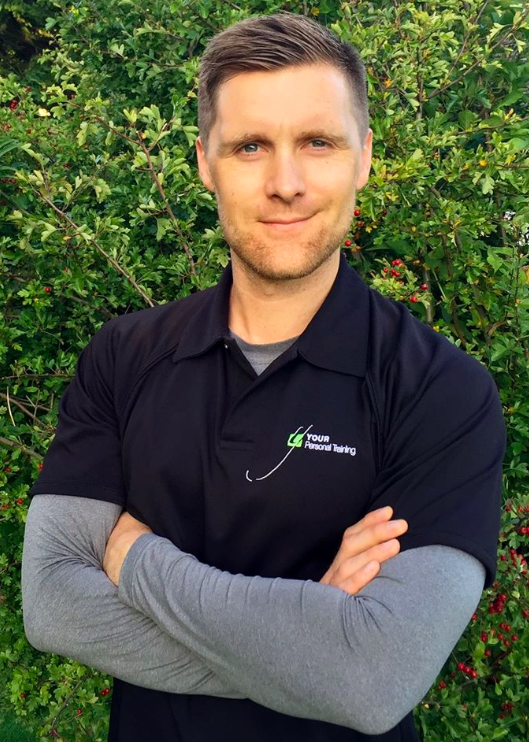
He’s even entered himself and some of his clients into the Bracket. We love to see trainers who embrace technology and put the ‘personal‘ into personal training.
If you want to find out more about Andy check out any of the below,
https://www.facebook.com/AndyCummingsPerformanceAndNutrition/
Check out his website
www.andycummingspt.co.uk
Or send him a message
WATT does a 1 min 30 second 500m take?
Well it takes you producing 480.1 watts, and thats a lot. Let’s look at how much power most people produce during exercise and that will help to put it into perspective.
For sustained periods of exercise of around 60 minutes the following is feasible
Everyday athlete – around 3 watts per kilo of bodyweight
Amateur athlete – around 5 watts per kilo of bodyweight
Elite athlete – around 6 watts per kilo of bodyweight
If Person A weighs 90kg, they produce 90 x 3 = 270 watts constantly.
If Person B weighs 80kg, they produce 80 x 3 = 240 watts constantly.
Who wins a race between them? Great question, and by answering, it this will allow you to understand more about how power output translates to faster performances within the Bracket.
If we are racing on a bike, where weight becomes an issue, then Person A has more power but more weight to carry around, and the opposite for Person B, so this should be close. But on a Rower, bodyweight doesn’t become a factor and therefore the heavier, more powerful one becomes the usual leader in the club house (or boat house).
The rower is actually quite efficient as well, doing a 500m in 2 minutes and 30 seconds is around a speed of 12kph so at that pace producing around 100 watts would put it between walking and running in terms of efficiency.
Everyday wattage
Laptop 40 watts
Desktop computer 120 watts
TV 150 watts
Coffee maker 800 watts
Toaster 1000 watts
Microwave 1200 watts
So basically to hit the 1 minute and 30 seconds that we talked about right at the start, you need to be somewhere between a TV and Coffee Maker.
Have a great day folks
Fordy
Wednesday 08.01.20
Who’s in?
Next man up, let us introduce you to
Lewis Grinsell
He’s the Academy Strength and Conditioning coach at Wasps Rugby and all round nice dude. Make sure if you’re in the Bracket you check him out, and I’m sure if you ask nicely he can give you some hints and tips on training for the events. Maybe one day we might have to bring in something Rugby related.

You can follow Lewis on instagram at @lgrinsell21
He trains out of Gymshark Lifting Club and is currently sitting at Number 4 in the Bracket with an Archon Score of 84.62 which in real time equates to 1 min and 34 seconds
Your ability to connect to the Rower is key
Life can be a drag sometimes, especially on the rower. See what we did there? Everyone has an opinion on what drag factor to put the rower on when trying to achieve their best result. But in truth, the drag is more about a feeling and understanding your body on the rower. Check out the video above and get your connection on the rower working and let us know how you get on and by how much it improves your 500m time by.
Tuesday 07.01.20
Who’s in?
Next woman up, let us introduce you to
Samantha Cubbins
Samantha is the Senior Coach at the Gymshark Lifting Club.

You can follow Sam’s adventures on instagram at @coachcubs_adventures
She trains out of Gymshark Lifting Club and is currently sitting at Number 5 in the Bracket with an Archon Score of 83.81 which in real time equates to 1 min and 44 seconds
We have a feeling though that this is just the tip of the ice berg for Samantha and we can’t wait to see her journey throughout the Bracket in 2020
The start of a beautiful relationship
It might seem like it wasn’t a good idea. It might seem like you’d rather be on the treadmill or getting ready to lift some steel, but we promise that the erg will deliver you some serious results in your training routine.
YOU WILL LEARN TO LOVE IT
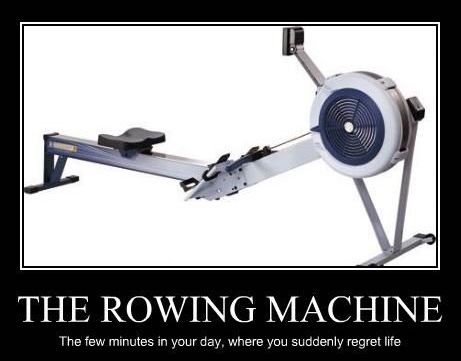
Monday 06.01.20
Monday Morning Motivation
If you don’t know Inky Johnson, you need to. Life is very short, in the blink of an eye you can lose the life you thought you had and all the dreams you had aren’t going to be a reality anymore. Take some time to just think about what you are doing and why you are doing it. Most of us go to the gym with a different agenda, some want to lose weight, some want to get fitter, others want to compete, but all of us go. We make the time in our lives to better ourselves. Some of us have been going for years, others just days, but the one thing we all have in common is that in one second that could all change. This post has been designed like all posts to sell you something, but what I’m trying to sell you today doesn’t cost you anything.
Today, I want you to buy into yourself.
At 9 minutes and 50 seconds in the video opposite (or below) Inky says the greatest piece of advice that his mother gave him was, “son, whatever you start, you make sure you finish”. He then goes on to say people get into things and then if they then don’t think it was what they thought it was, or the process isn’t what they thought it was, they quit. Quitting becomes a habit, that not only affects you, but those around you.
Lastly he says that the “process is more important than the product”, and thats exactly how we feel. The process of you committing, not cheating, being accountable and finishing what you start, is more important than the actual product itself.
So today, tomorrow and this week, just don’t quit, and if you ever think you might, watch the video again.
Thanks Inky
Imagine this is me, prepping you for your gym session
The best 4 minutes and 43 seconds to get you hyped for your gym session and make sure you PR that 500m Row
“The metres we need are everywhere around us, in the Bracket we fight for that metre, in the Bracket we tear ourselves and everyone else around us to pieces for that metre, we claw with our fingernails for that metre, because we know when we add up all those metres that’s going to make the difference between winning and losing, between living and dying. In any fight, it’s the guy, or girl willing to die who’s going to win that metre, and I know if I’m going to have any life anymore it’s because I’m still willing to fight and die for that metre, because thats what living is”
Sunday 05.01.20
Strength Training & Rowing
The following is a great article, it’s a BIG one though but seeing as its Sunday then I’m sure you can find 15 minutes with a cup of tea to have a read. It’s aimed at the importance of weight training and development when rowing. We’ll be going through loads of this over the next few weeks and will also lead us into other events within the Bracket so get yourself a head start.
Upper body training for rowing often gets minimized because of the notion that the lower body produces the majority of force in the rowing stroke. While the lower body is the engine of the stroke, all of that power has to go through the upper body, shoulders, arms, and hands, in order to get to the oar! A minimalist approach to upper body training for rowing fails to adequately strengthen the upper body to transmit power to the blade. Underpowered upper bodies result in performance loss and increased risk of injury. Low back pain and rib stress injuries are two of the most common, and costliest, rowing injuries, and weak upper body is a risk factor for both. In this Complete Guide installment, we’ll cover upper body training for rowing for both performance and reduced risk of injury, including relevant rowing research, specific strength training methods for in-season and off-season training, and why I WON’T use one popular upper body strength training exercise in my rowing programs.
Got to the rest of the article here
https://rowingstronger.com/2019/05/13/upper-body-training-for-rowing/
It’s Sunday, the perfect day for a PR
So you’ve got the plans from British Rowing the last few days, you’ve decided if you’re beginner, intermediate or advanced, and so we thought it would be a great time for you to actually follow a workout. Join Claire from British Rowing as she takes you through a session. Get to the gym, put your ear phones in and off you go.
Saturday 04.01.20
The man behind the curtain
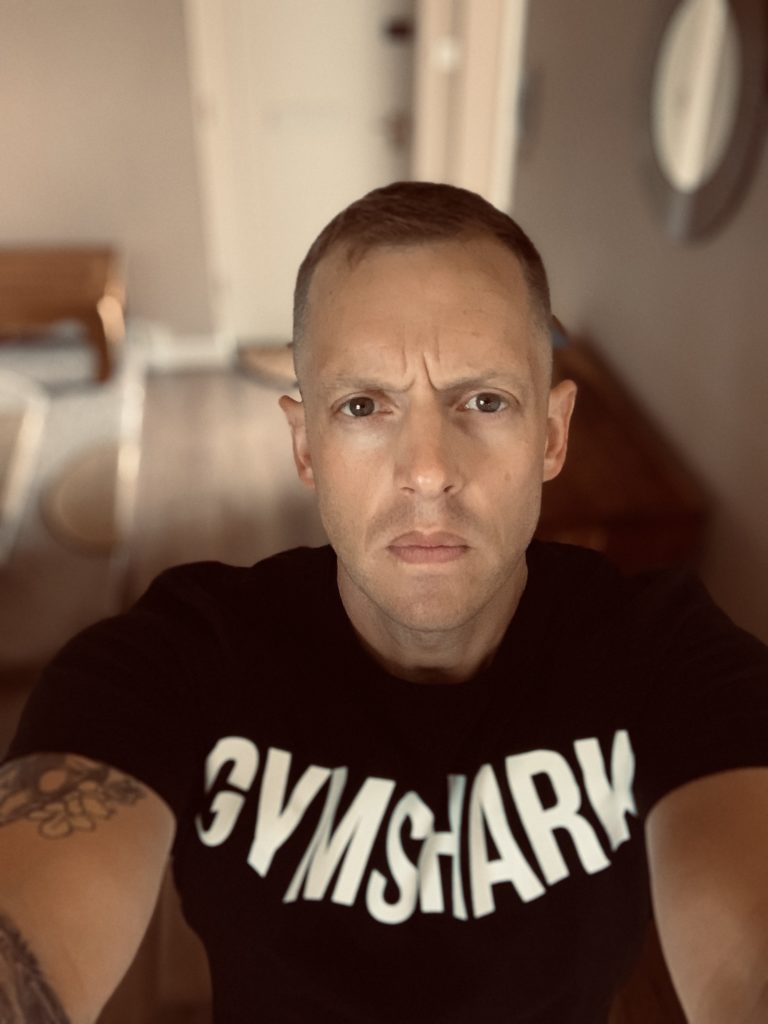
Seeing as it’s the weekend we thought we’d give you a bit of a break from the rowing and give you a bit of an insight into Matt Ford (Fordy).
So here are the Top 10 Fordy Facts
1 He was born on the 13.09.1975 in Birmingham (UK), ironically on a Saturday
2 He failed French at school, really badly. His French teacher told him to not take it as one of his options which led him to taking sport instead and his life long passion with fitness started
3 He passed his driving text first time after only having 6 lessons
4 His first car was a VW Beetle, he can still remember the number plate if you ask him, it was TOK 711N
5 He played both American Football and Basketball, and can still be found on court at least 3 times a week
6 He actually supports the Tampa Bay Buccaneers, so you know he must be serious as they haven’t won anything since they won the Superbowl in 2003
7 If he had to choose a last meal, starter, main course and dessert it would be, breaded mozzarella sticks, fully loaded burger and then cheesecake (that actually sounds really boring and un-adventurous)
8 His top athlete ever, has got to be Michael Jordan, no one else has the same pure winners mentality and win at all costs than he did
9 His favourite box set, it would have to be Vikings
10 He’s got two kids, one named Jax (after Jax teller in Sons of Anarchy) and Brady (named after Tom Brady, the GOAT of the New England Patriots)

Bonus Fact
He loves baking, cakes mainly but his best might be marshallow, nutella, rice crispy treats, although technically this isn’t baking. But they are AMAZING
Advanced Rowers
Considering I’m only hitting a 1.36.3 500m at the moment, I’m not going to need these yet, but here’s the training plan for those advanced rowers
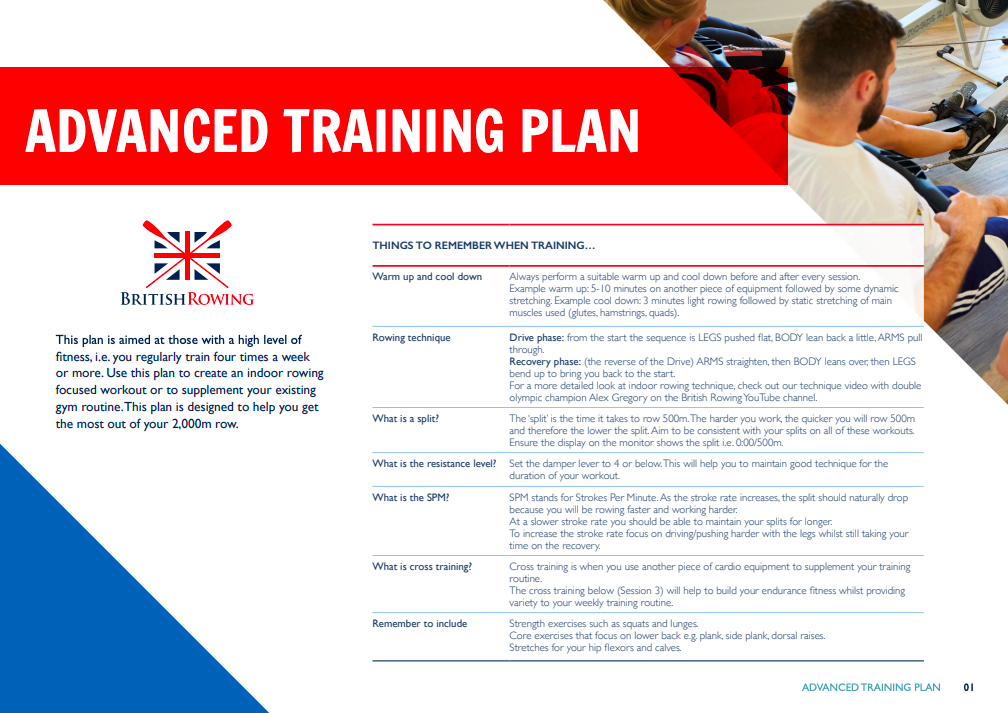
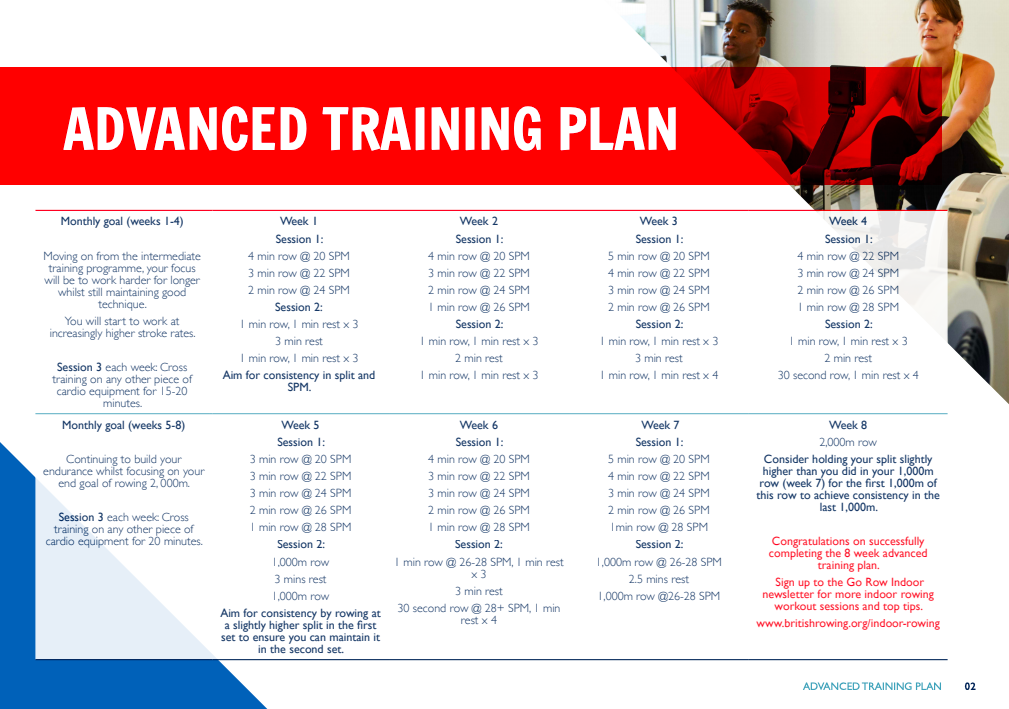
Friday 03.01.20
Who is Pete Howe?
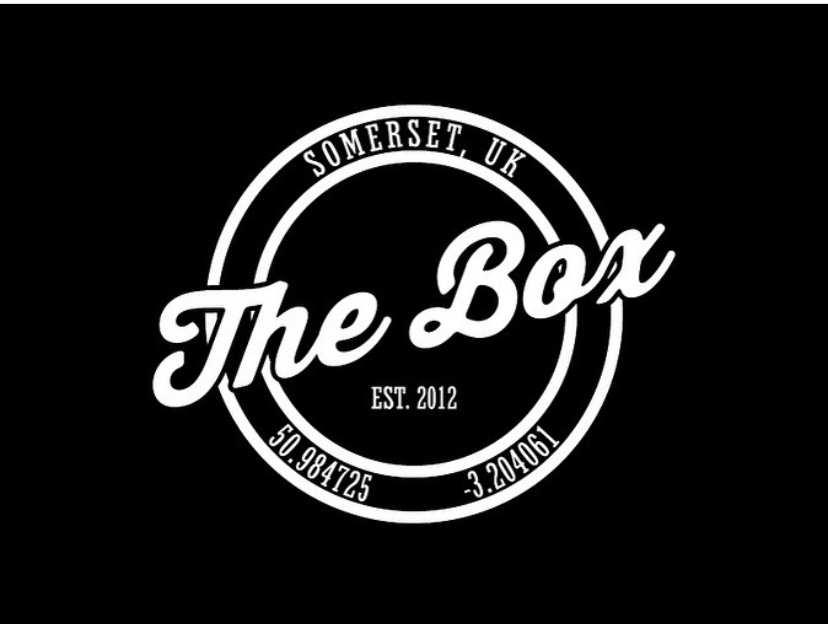
Pete is the owner of The Box Reebok in Taunton/Somerset
More importantly he’s a really nice guy
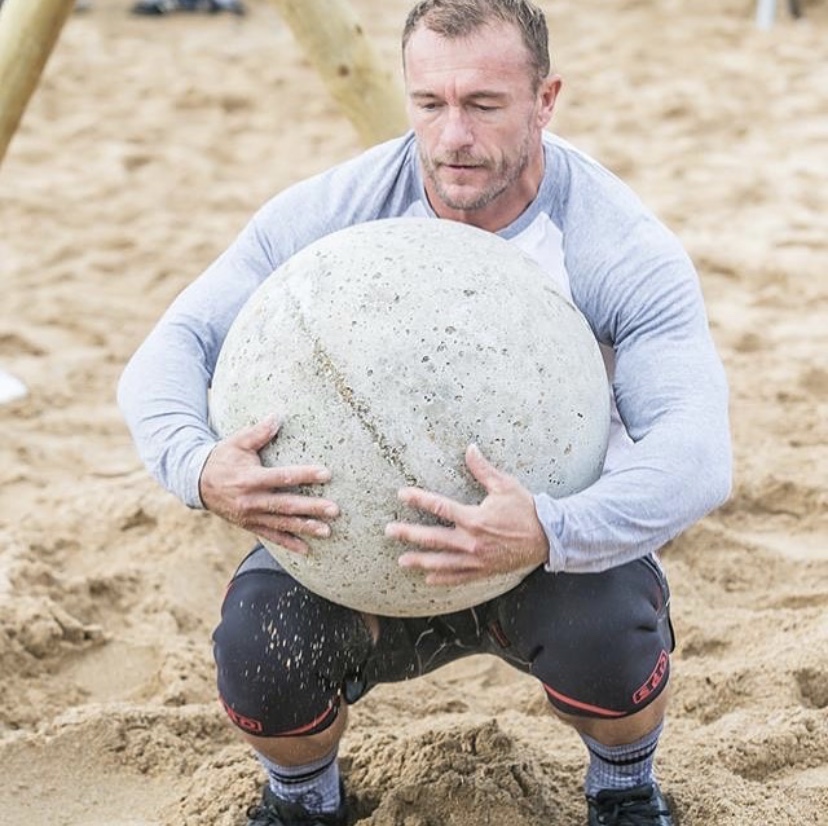
He also has tattoos

and trains with some pretty impressive people (Noah Ohlsen)

He also pulls a mean 500m row on the erg, check out the video opposite
Insta is petehowe79 or theboxreebok
Think you can beat him?
Only one way to find out!
Intermediate Rowers
Due to this months event being the 500m Row and we’ve already had some pretty impressive attempts, we thought we might need to look at a bit more advanced programming alongside the standard one we gave you access to through British Rowing.
Here you go
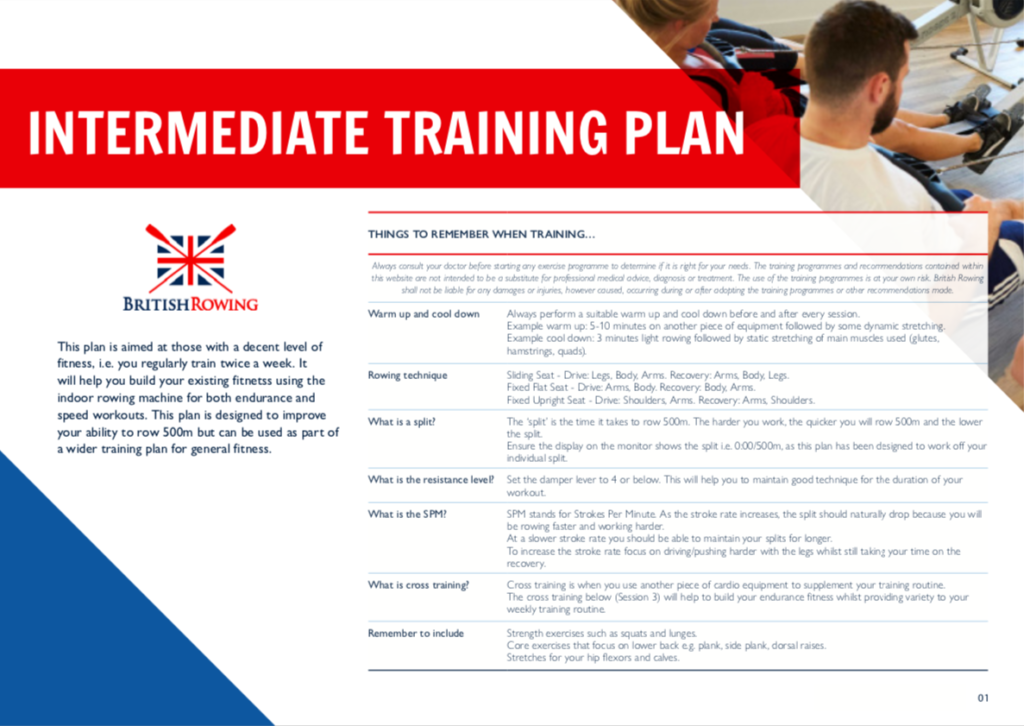
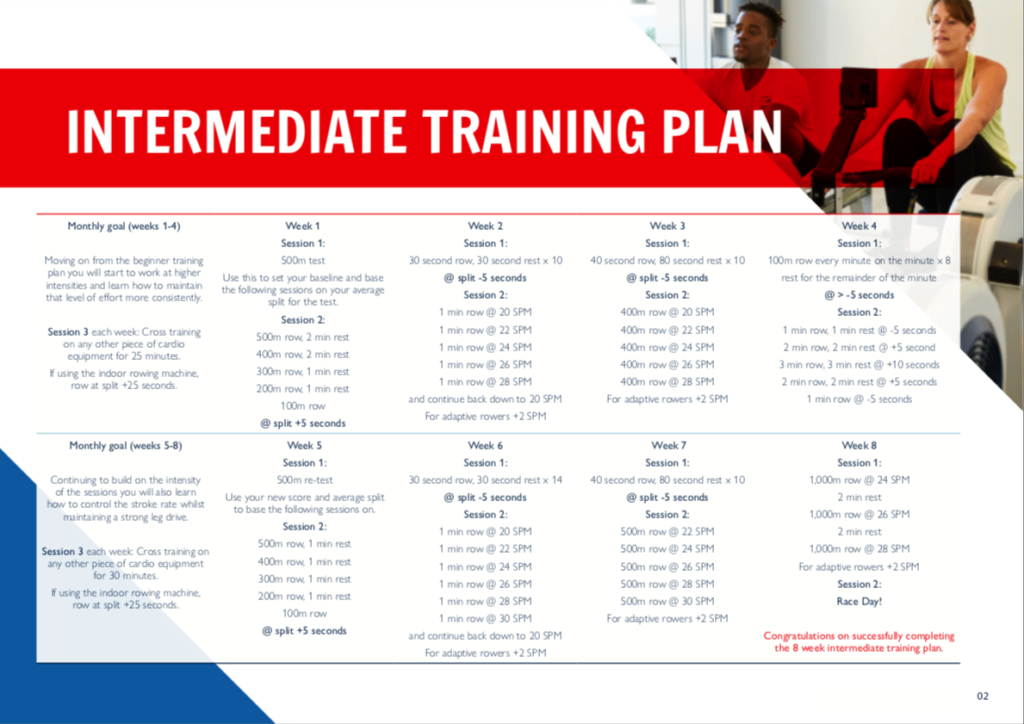
Thursday 02.01.20
Who’s in?
This is where we start to introduce you to the people who are already in the Bracket. You know I am (Fordy) but let’s start to intro you into some of the other people who will form part of the collective for 2020. Get to know these guys and girls, they will offer you support if you need it on the bad days and give you a virtual fist bump when you do well. You will also be able to follow their journey as well and learn from some of the techniques they are using to get the best out of your performance to.
Up 1st
Sarah Grace

You can follow her on instagram at @s_m_grace
She trains out of Snap Fitness Radstock and is currently sitting at Number 9 in the Bracket with an Archon Score of 72.11 which in real time equates to 1 min and 42 seconds
Only the 2nd day in and we’re already getting serious about your training, welcome to Concurrent Training & and the Interference Effect
The inclusion of strength training (to gain muscle mass, power and strength) combined with endurance training (to develop aerobic and anaerobic endurance) within a single training programme is known as concurrent training. Both types of training are typically incorporated into rowing programmes. Growing research however, has suggested that concurrent training compared to resistance training alone, may result in compromised improvements in muscle mass, power and strength. This is known as the ‘interference effect’.
One theory* explaining the interference effect suggests that endurance training stimulates competing adaptations within the muscle. The adaptations to the muscle fibre for resistance and endurance exercise are vastly different and can often be in conflict.
Resistance exercise typically trains skeletal muscle to generate high force outputs for short duration activities (favouring development of type IIb ‘fast twitch’ fibres). Conversely, endurance training requires individuals to exert relatively low force outputs while maintaining those outputs over long durations (favouring type I ‘slow twitch’ fibres).
At a molecular level, resistance training increases protein synthesis (muscle building) for up to 72 hours – however endurance exercise immediately inhibits important processes responsible for increasing protein synthesis. So completing an endurance session shortly after a resistance session dampens protein synthesis and therefore compromises muscle growth.
A further explanation suggests that endurance training causes residual fatigue and reduces the capacity of muscles to generate force. So if you then do resistance training with such fatigue the quality of your training and amount of load may be compromised. This may lead to a decline in strength development over a training cycle.
What is evident is that there are multiple factors that may contribute towards the interference effect. Many studies have observed that the degree of interference is largely affected by training protocols ie. modality, volume and the frequency of sessions. Therefore, there are ways in which the interference effect can be avoided or minimised to maximise gains in both components of fitness and these can be easily incorporated into training programmes.
Ways to minimise the interference effect
1) Depending on time available to train, three strength sessions per week seems to be an optimum stimulus to achieve positive gains in strength and power when completing several endurance sessions per week.
2) Maximise recovery time between sessions. Ideally, strength training should be placed after the endurance sessions or separated by at least eight hours.
3) Training until you fail a repetition should be avoided. Instead, a strength programme using a reasonable number of repetitions provides a favourable environment for achieving greater gains in strength, muscle power and specific performance. This will allow for a quicker recovery enabling rowers to perform subsequent endurance training at a higher quality.
4) Maximise protein intake throughout the day ie. 0.2g protein per kg of body mass every two hours is sufficient to maximise protein synthesis
By Sarah Moseley, GB Rowing Team sport scientist
Wednesday 01.01.20
A New Years resolution with purpose
It’s a brand new year, in fact, it’s a brand new decade, and I’m sure we all made our resolutions at the stroke of midnight. Here at the Bracket we want didn’t have a resolution, we had a mission. Our mission is to keep you engaged in your fitness throughout the whole of 2020 and not just in January.
We love a local hero, and ours is Ross Edgely (if you don’t know who he is then go ahead and Google him), he famously said, “be stupid enough to start something, and stubborn enough to finish it”. Now, you won’t be stupid to start the Bracket, in fact, quite the opposite, it will be the best decision you have made in relation to either starting your fitness journey or maximising it in 2020.
Not knowing what’s coming in the following months (you already know January is the 500m Row), will help you to stay engaged as your training will always be changing. With that will come challenges, this is where you will need to be stubborn. Some of the events will be right in your wheel house, and those you will feel confident in. You won’t mind going to the gym all the time to train for them and you’ll look forward to the input week where you get to show the rest of the world just how good you are. But then there will be those events that you haven’t trained for, or maybe you don’t actually like. These are the events that will test you both physically and mentally as getting to the gym and doing something that you might not want to do will require discipline. But this is where the gains live, this is what people talk about when they say you need to step outside of your comfort zone, be comfortable being uncomfortable.
We guarantee that you will look back at the end of the year and be proud of every session that you have put in at the gym and every input that you have put into the Bracket.
So if you haven’t already, go and sign up and welcome in 2020 and a brand new decade of fitness with the rest of the Bracket Collective.
You 1st input is the most important
This January, and for the rest of 2020, you’re about to get real familiar with the rower (Erg). But the most important thing about your Bracket journey is to remember that it’s about YOU. Yes you can compare to other people, yes we have levelled the playing field so that we don’t have categories, but the main reason for the Bracket is to give you something to focus on and when 2020 is coming to a close you can look back on your results and see how far you have come and how much you have improved by. So your first ever input is a special one, it will be your first step into the Bracket and as such we kind of want you to make a big deal out of it. So when you have done your row we would love for you to send us a video of it or post it onto our social channels. Oh and just so you don’t think that we don’t practice what we preach, if you have seen the video on our social channels today then you will see that I myself have committed to putting my videos up of every single time I do every event. It’s my intention to improve my fitness alongside every single one of you this year as well. So even if it’s something you wouldn’t normally do, take the plunge, and record you first every Bracket assessment attempt and share it with the world, I guarantee that in 12 months time you will be glad you did because you will look back and see just how far you have come,
All because you were stupid enough to start, and stubborn enough to finish
Fordy
